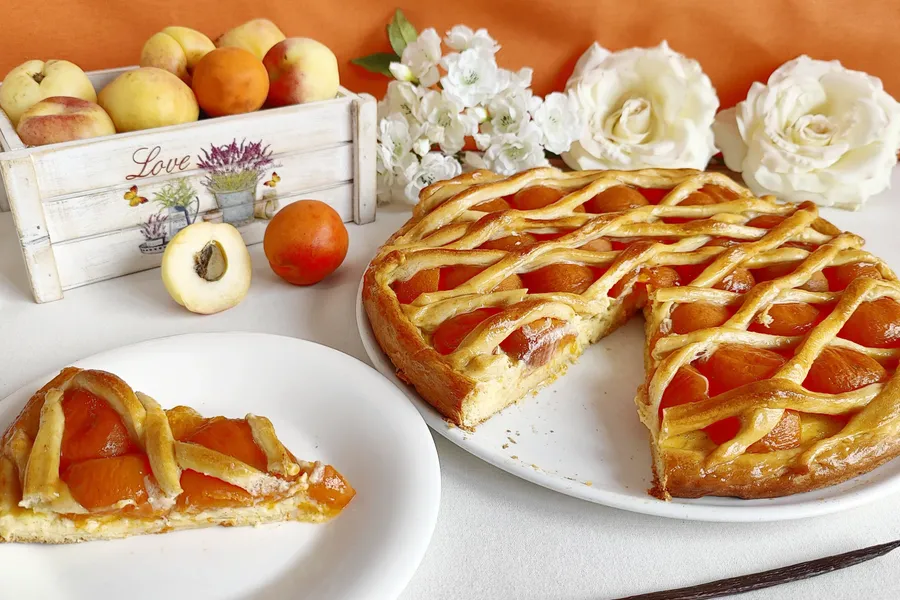
The history of apricot lattice cake
The Apricot Lattice Tart, or Aprikosen-Riemchen-Kuchen, is a traditional German tart made with a base of enriched yeasted dough and fresh apricots, topped with a distinctive lattice of dough strips. Its name comes from German: *Aprikosen* means apricots and *Riemchen* refers to the thin strips of dough that decorate the surface. This tart is known for its simplicity, soft texture, and deep roots in the baking traditions of western Germany.
It originated in the Rhineland (Rheinland) region, a historic area along the River Rhine that includes cities such as Bonn, Düsseldorf and Cologne. In this area, tarts made with fresh seasonal fruit are central to home baking. These are generally referred to as *Fladen* or *Obstkuchen*, and the decorative lattice style is known as *Riemchenkuchen*. The apricot version became especially popular in the 20th century, as the cultivation of this fruit improved in the southwest of Germany.
The use of apricots in German baking is not ancient, as this fruit was uncommon in Central Europe until well into the 18th century. However, their balanced sweet-sour flavour and good baking resistance quickly made them a favourite among bakers and home cooks. Today, apricots are successfully grown in regions such as the Palatinate (Pfalz), Baden and Bavaria, helping to incorporate them into many traditional recipes.
The dough used for this tart is *Hefeteig*, a yeasted dough similar to a light sweet bread. Unlike French brioche, *Hefeteig* contains less butter and sugar, aiming for a fluffy texture without being overly rich. This reflects a typical philosophy in German baking: the fruit should take centre stage, not the dough. The lattice or *Riemchen* placed on top adds a rustic, homemade visual touch, and also helps to hold in the fruit’s juices during baking.
This type of tart is a classic in Germany’s *Kaffee und Kuchen* tradition—the daily ritual of enjoying coffee with cake between 2 and 4 pm. It is commonly found in family-run bakeries, rural markets and summer festival tables. Homemade versions are passed down through generations, especially in the Rhineland and Westphalia regions, where recipes vary slightly depending on location and season.
Although less internationally known than other German cakes like the *Schwarzwälder Kirschtorte* (Black Forest gateau), the *Aprikosen-Riemchen-Kuchen* faithfully represents the spirit of Central European traditional baking: simple ingredients, classical techniques, and a strong focus on seasonality. Its similarity to other lattice tarts, such as the Austrian *Linzer Torte* or the Dutch *Vlaai*, highlights the rich cultural heritage shared by Germany, Austria, Belgium and the Netherlands.

 albertoimizcoz
albertoimizcoz

